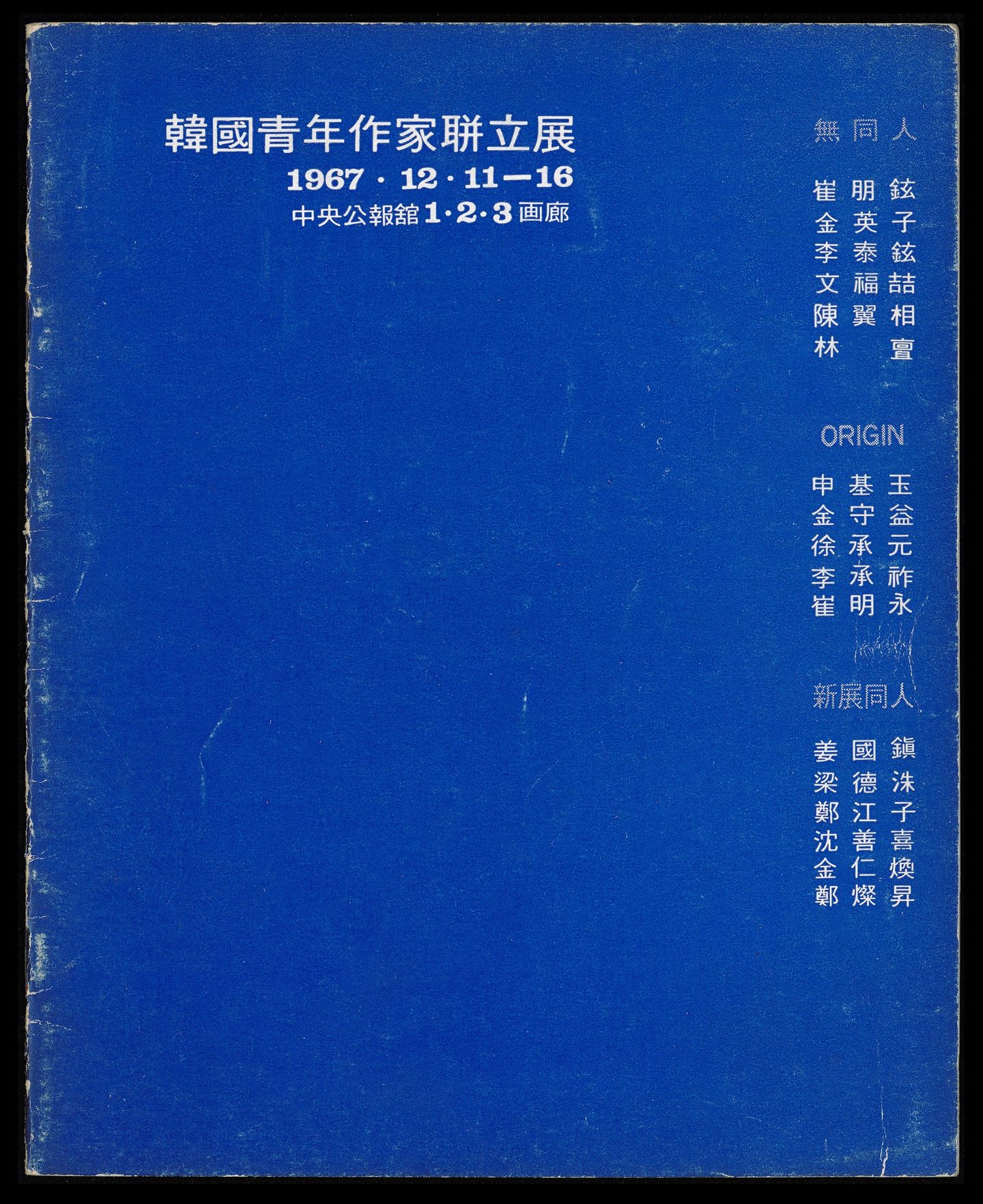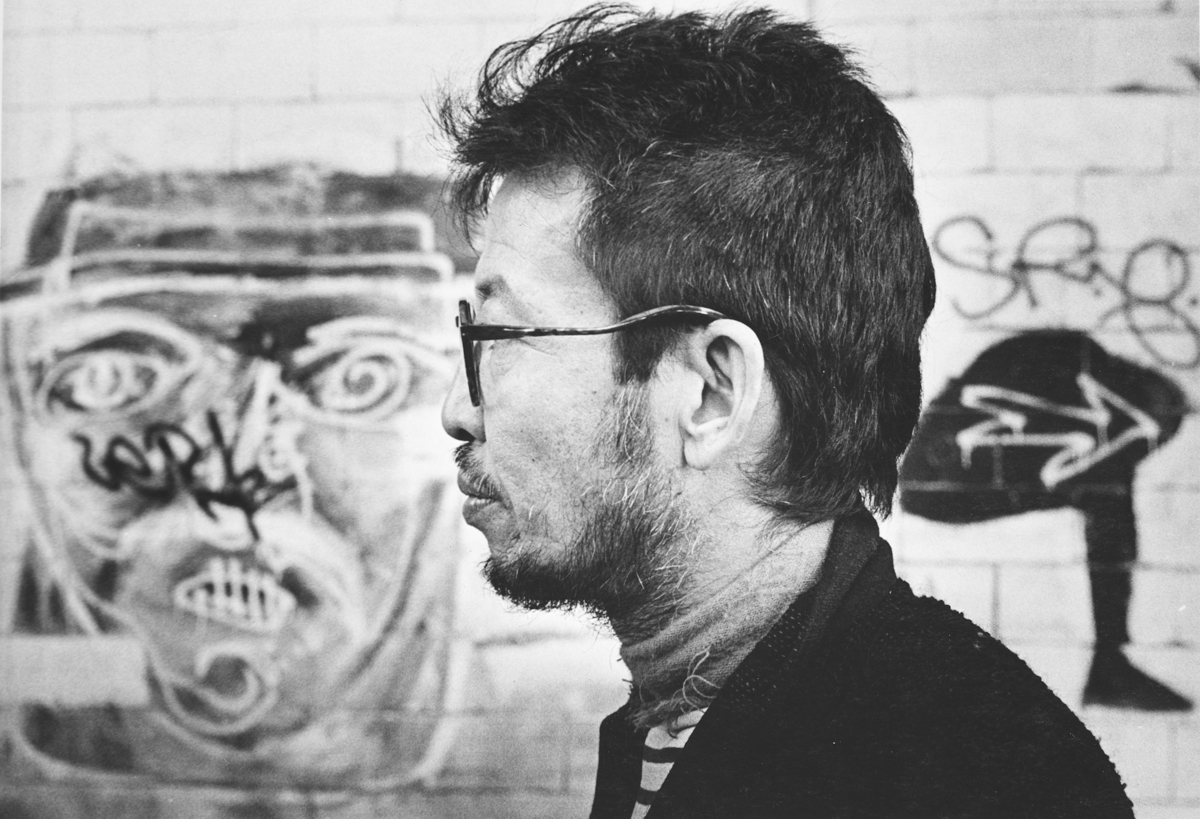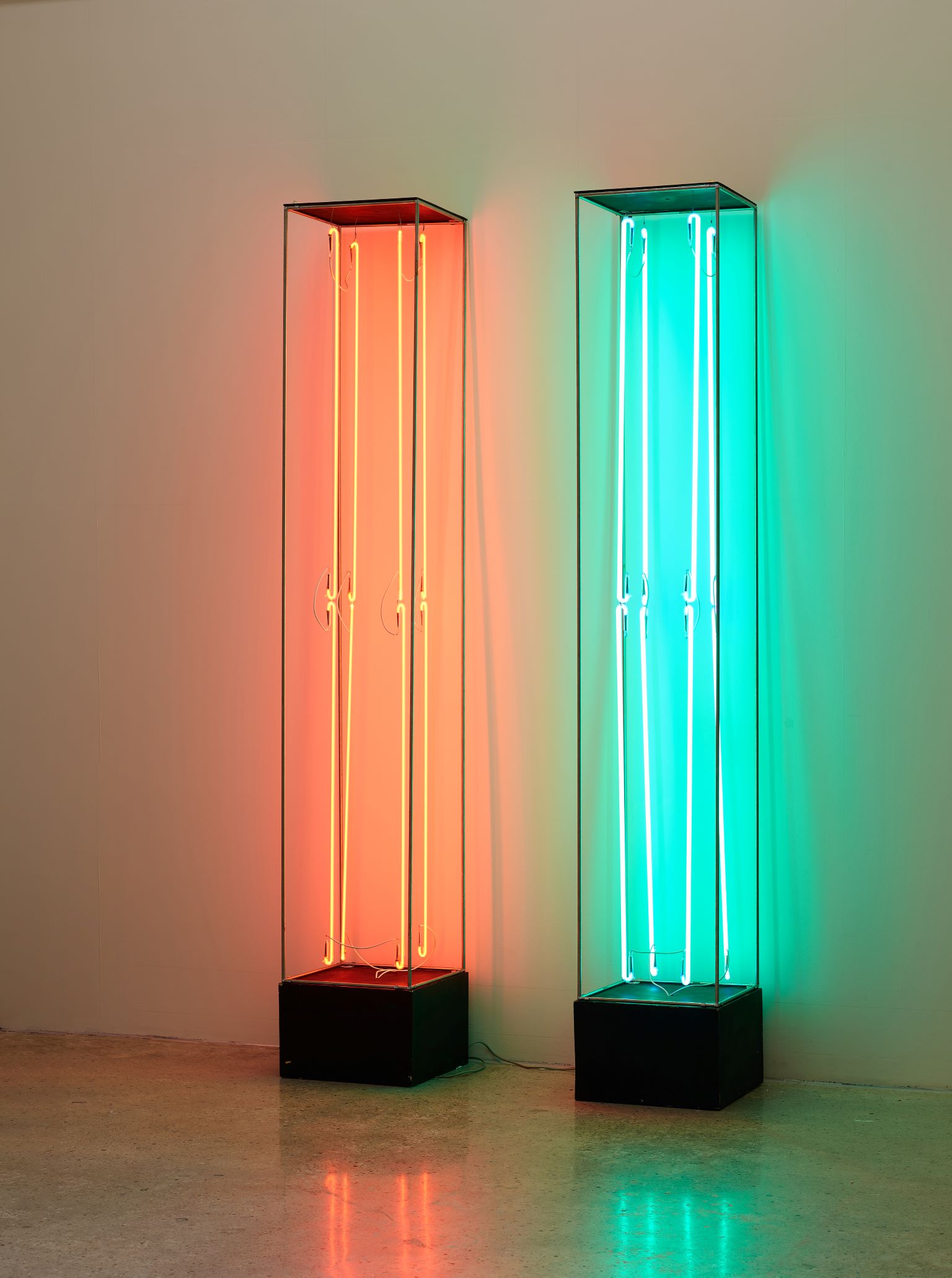
Chung Chanseung, Jung Kangja, Kang Kukjin, Transparent Balloon and Nude (May 30, 1968, Music Hall C’est Si Bon), Still from the original performance. Image provided by Jung Kangja’s family
Performance
* Source: Multilingual Glossary of Korean Art by Korea Arts Management Service
Related
-

Kang Kukjin
Kang Kukjin (1939-1992) was a leading artist in experimental art that emerged in Korean art scene from the late 1960s through the 1970s. In 1965, he graduated from the College of Fine Arts at Hongik University. In 1964, Kang Kukjin founded the Non Col, advocating a break with the established generation. He joined the Sinjeong Group in 1967 and worked in experimental art with objets, installations, and happenings. Participating in the Union Exhibition of Korean Young Artists held in 1967 along with Chung Chanseung, Jung Kangja, and others, Kang staged Happening with Vinyl Umbrella and Candle, the first performance art in Korea. In the following year, he performed Transparent Balloon and Nude and Murder at the Han Riverside. Later, Kang expanded the scope of his contemporary art by devoting himself to three-dimensional works and installations. He also led the popularization of printmaking by opening the first printmaking workshop in 1971. In the mid-1970s, he resumed painting. From then on, he produced the Rhythm series (1985) that explored Korean sentiments through repeated line drawings and the Light of History series (1989) that sought the original form of Korean beauty in historical artifacts like ancient clay figurines and Buddhist images. In 2019, the Kang Kukjin Print Award was established by the Kang Kukjin Foundation and Korean Contemporary Printmakers Association [Hanguk hyeondae panhwaga hyeophoe].
-

Union Exhibition of Korean Young Artists
The Union Exhibition of Korean Young Artists was an art show that members from Origin Fine Arts Association, Zero Group, and Sinjeon Group organized to be held at the Korean Information Service Gallery from December 11 to 17, 1967. By choosing to present works in what were the mainstream genres in Western art, such as pop art, op art, environmental art, happenings, and sculpture, the Exhibition helped to usher in a new era for Korean art after the dominance of the Informel group. Members from the three groups were mostly graduates from Hongik University. The manifesto they released stated: “Informel didn’t provide anything for last ten years. We are artists as activists who aim to create art after abstraction, art in everyday life, and public-friendly art.” This manifesto clearly expressed a desire to challenge the art world establishment, and the Coalition Exhibition is often considered as the beginning of a period of Korean “Experimental art (silheom misul),” which existed from the end of the 1960s to 1970s.
-

Chung Chanseung
Chung Chanseung (1942-1994) was a painter, performance artist, and installation artist. He was a pioneering figure who led experimental art in Korea in the 1960s and 1970s. He graduated from the Western Painting Department at Hongik University in 1965. After graduation, he was active in the artist collective Non Col, which he founded while still in college along with Kang Kukjin, Kim Inwhan, Nam Yeonghui, Yang Cheolmo, Choi Taeshin, and Han Youngsup. He also presented abstract paintings in the style of Art Informel. In 1967, he formed the Sinjeon Group, a group pursuing anti-art practices, together with Kang Kukjin, Jung Kangja, and others, and with members of Origin Society and Zero Group, he organized the Union Exhibition of Korean Young Artists. In 1968, Chung staged the happenings Transparent Balloon and Nude and Murder at the Han Riverside with Kang Kukjin and Jung Kangja. In 1969, he appeared in the experimental film The Meaning of 1/24 Second directed by Kim Kulim. In June 1970, he formed Korea’s first total art collective The Fourth Group with Kim Kulim, Bang Taesu, Son Ilgwang, and others. They presented the street happenings Street Theatre and Funeral of the Established Culture and Art. As these happenings by The Fourth Group were deemed decadent by government authorities, Chung focused on printmaking and three-dimensional works in and after the 1970s. After participating in the 1980 Paris Biennale, he moved to the U.S. a year later in 1981. Until his illness forced him to return to South Korea in 1994, Chung lived in the Greenpoint and Williamsburg neighborhoods of Brooklyn, New York and was immersed in making his distinctive junk art creations that connected metal scraps and discarded objects in a variety of manners.
Find More
-

Com-Art Group
Com-Art Group was an art group formed in January, 1990 in Suwon, Gyeonggi-do, by Lee Kyung-geun, Kim Kyung-han, Kim Sukwhan, Hong Oh-bong, Hwang Min-soo, Heo Jong-soo, and Choi Byungki. The group’s goal was to “restore the true function of art through public communication of national sentiment.” From the mid-1980s, Kim Sukwhan, Lee Kyung-geun, Hwang Min-soo, and Hong Oh-bong, who have been associated with experimental artist Kim Sung-bae (who taught art in Suwon), formed the Com-Art Group after the installation and performance-oriented relay exhibition Five Rooms at Sun Gallery, Suwon. The title “Com-Art” meant a combination of communication and art that showed that artists aimed to communicate with the public. In addition to showcasing the Empathy Art Festival several times from 1993 to 1996, the Com-Art Group expanded its activities beyond South Korea and into Asia by hosting international performance exhibitions in Suwon, Beijing, Osaka, and Tokyo, such as the '92 International show of Com-Art, and Fostering of Beijing-Korea Contemporary Art: From Janganmun to Tiananmen. In 1991 and 1993, the group participated in the DMZ Work Exhibition. In 1996, their last site work that utilized the building of Seogwang School was dismantled.
-

Experimental art
A genre of Korean art characterized by non-two-dimensional work such as sculpture, environmental installation and performance that emerged in the late 1960s and continued over the course of the 1970s. Art historian Kim Mikyung has analyzed the movement in the context of the political and social phenomena of the time and first coined the term experimental art to describe such work.
-

Conceptual Art
An artistic style and philosophical approach that originated in the United States and Europe in the 1960s. Conceptual artists valued the intangible ideas and processes of the art work as being at least of equal importance to the ultimate art product. In the West, this conceptual approach became critically prominent during the 1970s. In Korea, the term refers more broadly to the work of artists who have experimented with the subversion of sculptural and aesthetic norms. Such artists were active in the Korean Avant Garde Association (AG, established in 1969) and the Space and Time group (ST, established in 1971), creating a comprehensive movement of Korean conceptual artists whose work includes installations, performances, and outdoor work.






